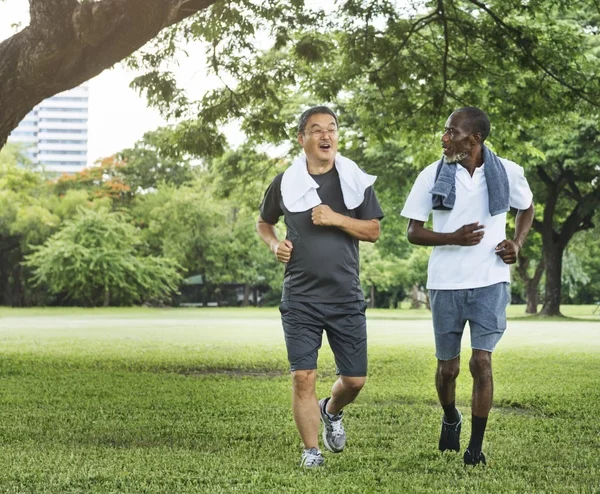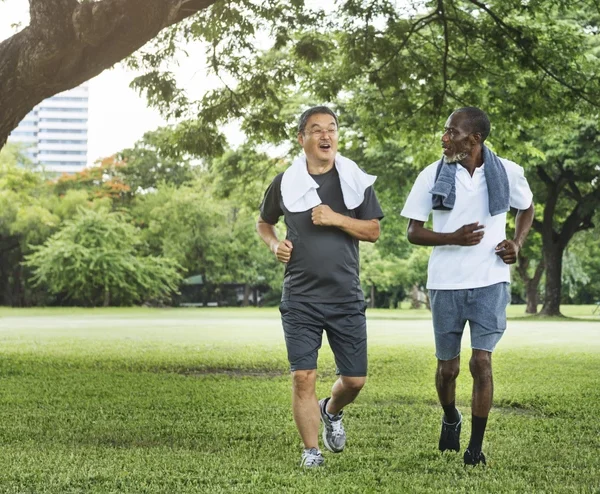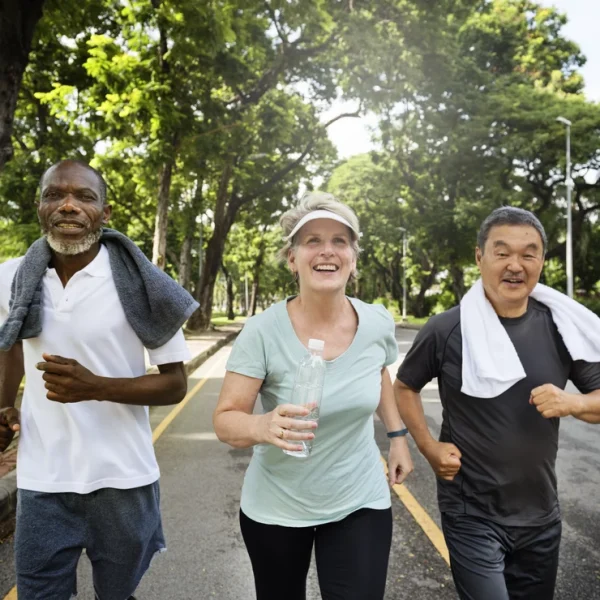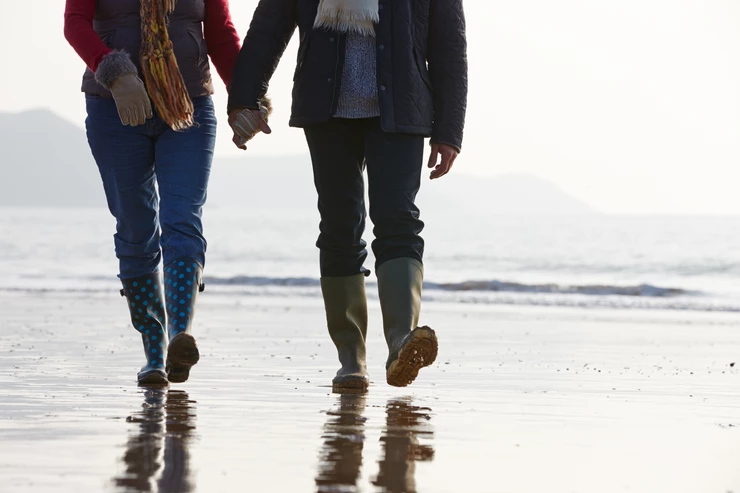Walk Your Way into a Healthier Lifestyle: 3 Walking Techniques You Would Love To Try
With the advances in technology and transportation, human beings now spend at least six hours per day sitting. A great deal of scientific research indicates severe health consequences for our circulatory system, posture, weight, sleep, and longevity when spending too much time sitting on the couch or at your desk.
The human body is an amazing and fascinating organism that functions best when walking is part of our everyday exercise routine. In a very short time, walking enhances your mental, physical, and spiritual well-being and boosts your metabolism. But, that’s not all. Walking also helps lower your potential for anxiety and depression while increasing your self-esteem!
Walking regularly helps maintain a healthy body weight and lower the risks associated with heart disease, diabetes, and some forms of cancer. Walking is not just exercise for your legs; it also exercises your brain, making you feel more alert and able to complete tasks more quickly and easily. It is a fantastic method for stress management and helps you get a better night’s sleep.
Sitting for prolonged periods is commonly referred to as the “new smoking!” Just remembering to get up and walk a little bit every 30 minutes can significantly improve your health and wellness.
Risk Factors Associated with Prolonged Inactivity:
- Musculoskeletal disorders (i.e., joint pain)
- Cardiovascular disease
- Insomnia
- Diabetes
- Obesity
- Poor mental health
- Some cancers
- Premature death
Major Benefits of Walking

“Walking is man’s best medicine” -Hippocrates
- Fights Cancer: Walking program can help you maintain healthy body weight or lose weight if necessary, lowering the risk of some cancers. Research by the American Cancer Society revealed that those who commit to regular brisk walking daily have a lower chance of getting breast cancer, even when considered high risk. Walking is also helpful for lowering the side effects of chemotherapy for those undergoing cancer treatment and improve cardiovascular fitness.
- Lowers the Risk of Diabetes: Daily walking helps control glucose or blood sugar levels and therefore is a preventive for diabetes. Walking has a direct impact on how efficiently your body processes sugars and helps reductions in risk for high blood pressure. The longer time spent sitting; the more insulin is produced by the pancreas, which increases the risk of diabetes.
- Increased Circulation: Physical activity like walking improves your blood circulation and reduce body fat. Studies show that those who walked enough to meet physical activity guidelines lowers the risk of cardiovascular disease.
- Strengthening Bones: Bones are living tissues, so exercising your bones improves bone density, which grows more important as you age. Stronger bones mean better balance and lower your risk of falling.
- Improves Digestion: Walking stimulates the digestive processes. Take a gentle and slow walk after a meal, and you should experience less bloating and fullness.
- Increases Muscle Strength: Walking helps tone and strengthen your muscles, preventing muscle loss associated with inactivity or aging. It strengthens your back and leg muscles.
- Boosts Immune System: Regular walking helps ward off respiratory problems such as stuffy noses, coughing, sore throats, etc. It can help protect you during the cold and flu seasons and recover faster when sick. Research conducted by Nieman et al. (2010) indicated participants who walked as part of their exercise routine at least five days per week had 45 percent fewer sick days due to upper respiratory problems. Participants who walked as part of their exercise routine at least three days per week had 26 percent fewer reports of cold or respiratory symptoms over a year.
- Improves Memory and Lowers Risk of Dementia: Walking workout slows down cognitive decline and slows down the loss of brain tissue associated with aging, and lowers the possibility of developing dementia.Increases Lung Capacity: Walking makes your lungs stronger. Walking increases the amount of oxygen intake while removing carbon dioxide. Your heart then pumps that oxygen into your muscles.
- Anti-Aging: Walking reverses age-related damages to your cells and helps produce Vitamin D, so a nice walk in the morning sun can slow the aging process in your body and brain.
Remember Safety First
- Check with your primary care physician before you design your walking routine.
- Always have your cell phone with you in case of an emergency or if you want to capture a beautiful sight.
- Familiarize yourself with the environment.
- Wear comfortable clothes and shoes, and if necessary, an umbrella or hat.
- Walk on smooth surfaces if your balance is anything less than excellent, or walk with a walker.
- Make sure to stay hydrated.
Stretch
Before you start your walking routine, make sure to stretch. Stretching will relieve any stiffness you have from “sitting around.”
How to Stretch:

- Stand upright
- Keeping one leg on the floor
- Raise one knee and press gently against a wall or back of a couch
- Squeeze your abdominal muscles and your glute muscles as you raise your body
- Maintain a straight standing position
- Hold
- Then switch to the other leg and do the same.
- Repeat every time before you go out to walk.
Indoor Preparation Exercise #1
- In the comfort of your home, get up from sitting.
- Place your feet on the ground with your legs slightly parted, and your weight balanced equally on both feet.
- Notice how stable the ground is.
- Close your eyes and comb over your body. Starting at your feet, notice any sensations, feelings, or thoughts while relaxing each muscle as you move upward toward your head.
- Take a deep breath while thinking good thoughts and hold for five seconds.
- Exhale from the middle of your chest, breathe good intentions into the world, and count to five.
- Repeat numbers 2 and 3.
- Then repeat.
Outdoor Walking Exercise #2
- Consciously relax your muscles starting with your neck, allowing your head to stretch upwards.
- Lift one foot off the floor with your knee moving forward and your head slightly tilted forward, like a string pulling you in the forward direction by your forehead.
- Take a step, landing on your heel first, gradually transferring your weight onto your foot’s ball and then your toes.
- Feel your toes as they touch the ground as you roll your foot from the heel to ball to toes, step by step.
- Return your focus to relaxing the tension in your upper body.
- Allow your arms to swing while you walk naturally.
- Move your left shoulder with your right knee and your right shoulder with your left knee.
- Think of your body as a pendulum, rhythmically swinging your arms with your head balancing you.
- Feel yourself moving like a pendulum.
- Notice your feet and how they connect to the ground, noticing every sensation and sound your feet make as they touch and lift from the ground.

Outdoor Walking Exercise #3: Engage Your Senses
- Create a walking exercise that allows for 50 steps or paces to start. You can also do this inside.
- Begin walking the 50 paces and then stop and take a deep breath.
- Turn around, walk back to where you started, and stop for another deep breath.
- During your walk, recognize you are intentionally walking for your health rather than the usual auto-pilot you are on. Pay attention to how the ground feels, how the air feels, how your head moves, and how you breathe.
- Meditate on the beauty of nature, taking note of something new each day.
- Observe all of the beautiful things in the environment as you take your daily stroll. Remember to stop and smell the roses!
- Stop and look closely at the plants, flowers, and trees. Look at the details of the leaves, the petals of the flowers, and the horizon’s glow.
- Pay attention to all of your senses. You can taste and smell the freshness of the air as it flows into your nose and out of your mouth.
- Hearing the birds, seeing nature, touching and tasting make us alive.
- Journal about your inspirations and thoughts in your daily walking log when you get home.
- You can increase the length of your walks with time or keep it at 50 paces three times per day. You can add or subtract steps according to your level of functioning.
We Can Help!
Here at Senior Healthcare Advisors, we specialize in maximizing Medicare benefits! We are here to guide you in understanding and enrolling in the Medicare benefits you are entitled to and qualify for. Give us a call today.
888.809.2440
[We do not offer every plan available in you’re area. Currently we represent [x]organizations which offer [xxxx] products in your area. Please contact Medicare.gov, [1-800-MEDICARE], or your local State Health Insurance Program (SHIP) to get information on all of your options. [[Senior Healthcare Advisors, LLC,], [in California – SCH Insurance Agency]] represents Medicare Advantage [HMO, PPO and PFFS] organizations [and stand-alone PDP prescription drug plans] that have a Medicare contract.] [Members may receive a monthly or quarterly allowance in the form of a benefits prepaid card to pay for a wide range of approved [groceries] [and] [utilities]. Unused amounts will expire at the end of the month or quarter. Enrollment depends on the plan’s contract renewal.
Not all plans offer all of these benefits. Benefits may vary[The benefits mentioned are a part of special supplemental program for the chronically ill. Not all members qualify.]
[The benefits mentioned are Special Supplemental Benefits for the Chronically Ill (SSBCI). You may qualify for SSBCI if you have a high risk for hospitalization and require intensive care coordination to manage chronic conditions such as Chronic Kidney Diseases, Chronic Lung Disorders, Cardiovascular Disorders, Chronic Heart Failure, or Diabetes. For a full list of chronic conditions or to learn more about other eligibility requirements needed to qualify for SSBCI benefits, please refer to Chapter 4 in the plan’s Evidence of Coverage.]
[Part B Premium giveback is not available with all plans. Availability varies by carrier and location. Actual Part B premium reduction could be lower.
Enrollment in a plan may be limited to certain times of the year unless you qualify for a Special Enrollment Period or you are in your Medicare Initial Enrollment Period.] by carrier and location. Limitations and exclusions may apply.]
[[[Senior Healthcare Advisors, LLC, ], [in California – SCH Insurance Agency]] not connected/endorsed by a government entity.
You also agree to the Terms, Privacy Policy.]] [Part B Premium giveback is not available with all plans. Availability varies by carrier and location. Actual Part B premium reduction could be lower. Enrollment in a plan may be limited to certain times of the year unless you qualify for a Special Enrollment Period or you are in your Medicare Initial Enrollment Period.]


